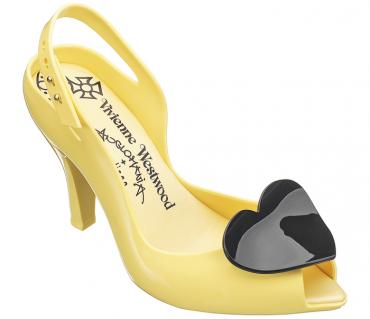And so, as promised, I had sent an email requesting more information on PVC to Melissa (via Arbec Group), Vivienne Westwood and Grendene.
I received an email response from the Arbec Group immediately asking me which environmental and safety concerns I was referring to. A simple Google search might have given them an idea, but none the less, here was my response:
According to this 2005 Greenbiz article, “[h]azardous chemicals are used and released in this commonly used material, the second highest selling plastic in the world. Studies show links between chemicals created and used during the PVC lifecycle and cancer, reproductive and immune system damage, and asthma”. The article claims that many companies have taken action in eliminating PVC from their products due to health, safety and environmental concerns such as Microsoft, Crabtree and Evelyn, Wal-Mart, HP, Adidas, Aveda, Bath and Body Works, the Body Shop, Gerber, Honda, Ikea, Lego Systems, Nike, Samsung, SC Johnson, Shaw Carpet, Toyota, Victoria’s Secret, Volkswagen, and Volvo. And of course, MEC as mentioned in the earlier post. The Centre for Health, Environment and Justice even maintains a “PVC: The Poison Plastic” campaign.
I have yet to hear back, but when I do I will post an update.
So what do we have?
-These shoes are being marketed and sold as sustainable.
-We know that in 2005 companies such as adidas, Nike and Wal-Mart took steps to remove PVC from their products, as a result of the hazardous nature of the material.
-Melissa claims that Grendene is the “holder of exclusive injected thermoplastic”
-According to their website, Melissa has trademarked ‘MELFLEX’ which is “hypoallergenic and 100% safe for your health. It is odourless, neutral and natural”
-The companies involved have yet to comment on the hazardous reputation of PVC in the textile and apparel industry.
Let’s talk briefly on the importance of understanding the lifecycle of a garment. It may be true that the factory producing the PVC for this shoe company maintains “practically zero waste” and that the shoes are easily recyclable in house. The company boasts the sale of 176 million pairs of shoes per year. Surely all of these shoes are not sent back to the original factory in Brazil for proper breakdown.
There are quite a few shocking factors at play here: that a fashion/apparel company could so blatantly market itself as sustainable without feeling the need to support its claim; that the entire lifecycle (particularly post consumer) of the PVC is not taken into consideration when stressing the company’s take on its plastic “ecological manifesto”; and the lack of response for comment on the ‘sustainable nature of PVC’
Greenbiz article is available here
“PVC: The Poison Plastic” campaign is available here

